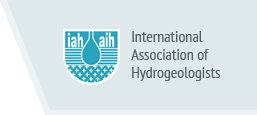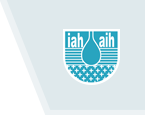Consultation on Groundwater Quality [Report]
Download the Survey Report [pdf, 247 kb]
In September 2020, the IAH Groundwater Quality Commission (GQC) started an online survey of the groundwater community to tailor and prioritize the commission’s activities. One of the main objectives of the survey was to find out which groundwater quality topics are important to the participants. The survey consisted of 21 questions, and it was answered by 140 people. The consultation was available in 4 languages: English (82 answers), Spanish (54 answers), French (4 answers), and Chinese (0 answers). The survey was closed in January 2021.
The respondents identified themselves mainly as a researcher (22%), lecturer/professor (27%), or hydrogeologist (19%). Other job titles included geologist, manager, modeler, (environmental) consultant, chemist, and student. Regarding the groundwater expertise of the participants, 54% reported that they have more than 10 years of work experience while 22% reported 5 to 10 years. The larger proportion of more experienced respondents was also reflected in the age distribution i.e., most respondents were 35 years or older. 35% of the participants were female.
The countries from which the most answers were received were the United States (15), Colombia (13), Mexico (12), Peru (10), and India, and United Kingdom with 8 answers each (Figure 1). Of all participants, 63% were IAH members and 81% were interested in joining the IAH-GQC commission.
Figure 1: IAH Groundwater Quality Commission (GQC) survey participants by country.
Countries with one contribution: Algeria, Belgium, Belize, Benin, Bosnia-Herzegovina, Burkina Faso, China, Croatia, Cuba, Ethiopia, France, Iran, Italy, Jamaica, Jordan, Kenya, Lebanon, Namibia, Nepal, Nicaragua, Oman, Panama, Senegal, Slovakia, South Africa, and Sweden. Countries with two contributions: Australia, Bangladesh, Brazil, Chile, Ecuador, Greece, Guatemala, Morocco, Pakistan, and Paraguay.
Relevant substances and topics
We started by asking if respondents are currently involved in groundwater quality studies and if so, which topic(s) are covered by these (multiple choice answer, more than one answer possible). The great majority (91%) indicated that they have worked (or work currently) on groundwater quality projects, with salinity, heavy metals, stable isotope analysis (D and O18), arsenic, and fluoride receiving the most mentions (more than 50). All responses are summarized in Figure 2.
Figure 2: Groundwater quality topics investigated by the respondents to the IAH Groundwater Quality Commission (GQC) survey (Question 1).
Other issues mentioned by the participants included: mathematical modeling of fate and transport of contaminants in groundwater, interaction of coexistence of “good” and “bad” (e.g. calcium and arsenic), bromates, assessment of groundwater quality in Sahelian countries, antimicrobial resistance, karst chemistry, other isotopes (noble gases, 4S and 18O of SO42-,13C of CH4, 2H), leaking gasoline in shallow aquifers, desalination, carbonates, aquifer contamination by wastewater, baseline groundwater quality characterization, leachates from landfills and mining, groundwater mineralization, persistent chemicals (recalcitrant in the environment), and potential riverbank filtration.
Our next question inquired about what capacities exist within the respondent’s country/region to analyze chemical substances of health significance? (multiple choice answer, more than one answer possible). As summarized in Figure 3, nitrate, coliforms, E.coli, heavy metals, and salinity were the most frequently mentioned analytical capacities (more than 100 times). The least mentioned ones were legacy organics, microplastics, and PFAS (per- and polyfluoroalkyl substances). Moreover, 26 respondents said that they do not know if there is the capacity to analyze any of these substances in their country, and 5 indicated that there is no capacity in their country/region.
Figure 3: Access to analytical methods as indicated by the respondents to the IAH Groundwater Quality Commission (GQC) survey (Question 2).
Groundwater quality monitoring and access to data
Another objective of this survey was to collect information on national groundwater quality monitoring programs. Thus, one question was: do you know which institution is in charge of groundwater quality monitoring in your country? 89% of participants answer “yes” and, in most of the cases, provided the name(s) of the institution in charge. In general, these institutions can be grouped in the following categories: environmental protection agencies, federal/provincial agencies, geological surveys, ministries (e.g. of agriculture, ecology and environment, environment and water, environment, health, water and energy, water and irrigation, water resources, and water supply), regulatory bodies of sanitary services, research institutes, universities and providers of water and sanitation.
Subsequently, the participants were asked if they were aware of the existence of reports about the current status of groundwater quality in their country. 71% answer “yes” to this question but only 40% indicated that data can be accessed through the internet whereas 32% did not know how to access the data. Other answers were diverse and included: via request, research documents, access is not possible or there is limited access, and data does not exist.
What can the commission do for you?
The participants had the opportunity to choose from activities proposed by IAH-GQC, and also to propose their own ideas for the commission to explore. One suggestion was if the IAH-GQC should produce “living” groundwater quality maps (regional or global where appropriate) to highlight regions with good or poor water quality for more common parameters? (‘Living map’ is defined as a map being regularly updated as new data becomes available). On a scale from 0 to 10, from “strongly disagree” to “strongly agree”, 135 participants agreed (in various degrees), and 89 of them “strongly agreed”.
In a follow-up question, the participants could indicate why they agreed or disagreed with the previous suggestion. Some of the reasons why participants agreed were that living maps could contribute to communicating groundwater science and act as a tool for education and decision support, as well as to highlight problem areas and bring public attention to relevant issues. Also, such a map could serve to encourage the sustainability of monitoring programs in each region.
However, some participants (5) did not agree. One participant believed that it would be challenging to keep such maps updated, and another one indicated that a living map is just an academic exercise without real practical use. There are also some concerns about the consistency of data, proper quality control, and assurance, scale (national vs global), selection of contaminants, type of representation (symbols and/or curves), and that these maps would be used by some users to support decision making instead of carrying out the necessary local studies.
Next, the commission proposed 5 activities and asked the participants if they would be useful for IAH and/or the hydrogeological community. The activities receiving the most votes (~110 each) were
- organize sessions at international events with a specific focus on groundwater quality
- produce technical overview reports highlighting specific water quality challenges
- produce global maps (regional or global where appropriate).
Other highly ranked activities included (1) organizing and coordinating a thematic issue focussed on water quality challenges for groundwater and (2) producing short flyers highlighting specific groundwater quality challenges. Participants also provide suggestions, such as: provide educational courses (webinars, training), disseminating information to a wider audience, organizing high-level meetings and conferences, promoting closer working relationships between regulatory bodies and academic institutions, helping countries to develop a protocol for groundwater monitoring, provide data to the scientific community, implement standards to exchange data via interoperable systems, circulate groundwater vulnerability maps, and to map global trends over time in groundwater quality.
Looking Ahead
We are very excited about the outcome of this survey because it shows a great interest in groundwater quality issues and the strong willingness of the community to be involved with the commission. Groundwater quality will be one of the defining topics of this century and is noteworthy that practitioners from all over the globe work on related topics. We welcome new members of the groundwater quality commission and encourage motivated people like you to become actively involved. Anyone interested please contact us via email at iahgqc@gmail.com.







